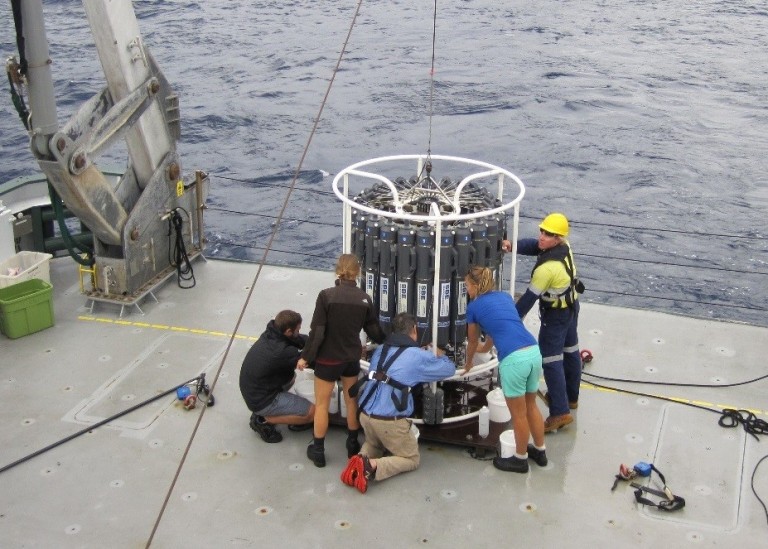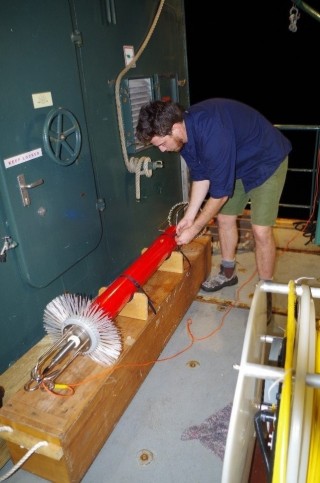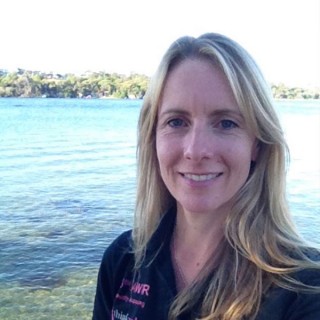
Today we are on station at the eastern corner of South Scott lagoon examining the connection between the lagoon and the open ocean. By taking continuous oceanographic samples at the one site we can estimate the net pumping, driven by the tide, of open ocean water into the lagoon. At South Scott Reef lagoon there are two major entry/exit points; one to the west (sampled on April 19th) and one to the east. It is the eastern channel that is the focus for today. A gravitational pull between the sun, the moon, and the ocean forces a bulge at the surface which tracks the moving moon. As the bulge occurs it forces horizontal flow in the ocean – this is what we call the tide. The dominant tide pumping water in and out of the lagoon is the lunar M2 tide which has a period of 12.4 hours. Hence, we must sample for more than 12.4 hours to measure the full cycle.
Following the flow

We found that on the western side of the lagoon the flow enters rapidly through a narrow channel drawing ocean water from depths of around 100 metres and pumping into the shallower lagoon (average 40 meters). Imagine the amount of energy it would take for one person to carry a heavy suitcase up a 60 meter flight of stairs. Then image the energy needed for the ocean to move very large amounts of water up 60 meters into the lagoon – it requires a lot of energy! All of which comes from gravitational pull, or the tide. Gravity is a very powerful force!
The eastern side, where we are today, is quite different. The channel is wider and the flow, rather than being straight, is characterised by strong circular horizontal eddying. If you look at the particle tracking movie below, modelled by Matt Rayson, it demonstrates the difference between the east and the west channels. To the west the flushing of the lagoon is a linear current moving backwards and forwards. In contrast, to the east, the flushing is more complicated and an anti-clockwise eddy can be observed.


